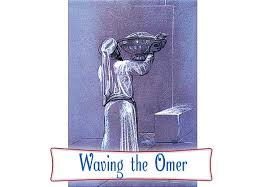 The following is from pp. 177-178 of Darby’s “Preface to the German Testament”, in: The Collected Writings of J.N. Darby, edited by William Kelly, Volume 13, Critical no. 1, H.L. Heijkoop — Winschoten (Netherlands) 1972 (Reprint).
The following is from pp. 177-178 of Darby’s “Preface to the German Testament”, in: The Collected Writings of J.N. Darby, edited by William Kelly, Volume 13, Critical no. 1, H.L. Heijkoop — Winschoten (Netherlands) 1972 (Reprint).
«The expression “second first sabbath” (Luke 6:1), at first sight presents some difficulty, which, however, disappears upon a closer attention to Jewish customs. The year, as regards the worship of God among the Jews, began with the month Abib (Heb. “green corn”), which lasted from the middle of March to the middle of April.
In Leviticus 23, in which we find the Jewish feasts described, we may observe that in addition to the general and weekly recurring feasts of the sabbath, the chief feasts begin with the passover (the 14th of Abib), and that, in immediate connection with it, it was ordained that on the day after the following sabbath the first-fruits of the corn should be offered in the ear, a foreshadowing of the resurrection of Jesus which took place on the morrov after the sabbath of the passover week, or feast of unleavened bread.
The sabbath immediately following the passover was therefore the “first” or great sabbath, and after the offering of the first-fruits on the morrow after the sabbath, the first day of the week, the harvest might be commenced, and the new corn eaten, which was not permitted before, even though corn stood ripe in the fields.
On the following sabbath, the “second” after the “first” or great sabbath, we see that the disciples ate ears of corn on the way, for the offering of the first-fruits had already taken place on the first day of the week; and, as seven weeks or sabbaths were counted from this day to the feast of Pentecost, it was therefore the “first” of these seven sabbaths, or the “second” with reference to the great sabbath of the Passover. By these explanations we have, we think, justified the expression “second first sabbath”, and removed any difficulty to the reader’s understanding.»
According to Darby the “first” or “great” sabbath was thus the sabbath immediately preceding the sunday of the first-fruits- or Omer offering. The next or “second first” sabbath was the first of the seven sabbaths of the Omer count until Pentecost (the Feast of Weeks). Here we have a clear and simple explanation of Luke 6:1 which has the advantage of following scriptural terminology in not mixing up sabbaths and annual feast days.
This is an indication that when the Gospel of Luke was written the Sadducees were still in control of the Temple ceremonies and that the Omer was counted according to the ancient priestly (Zadokite) tradition that was preserved by them.
Recent Comments